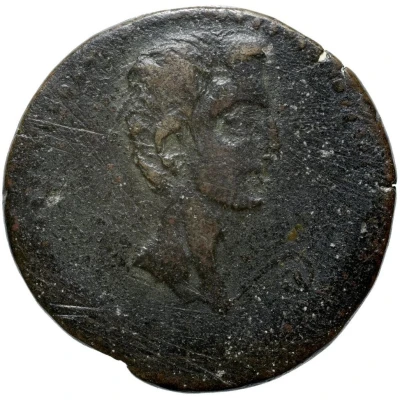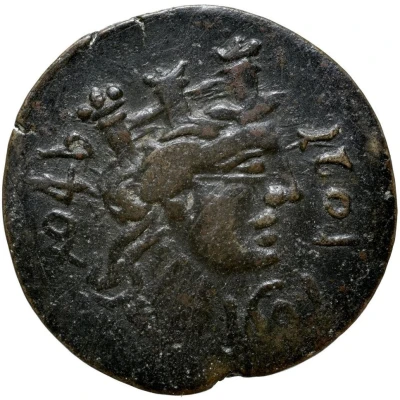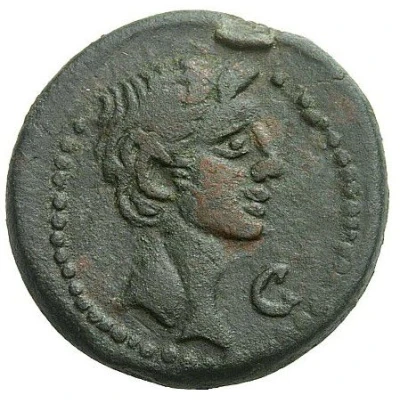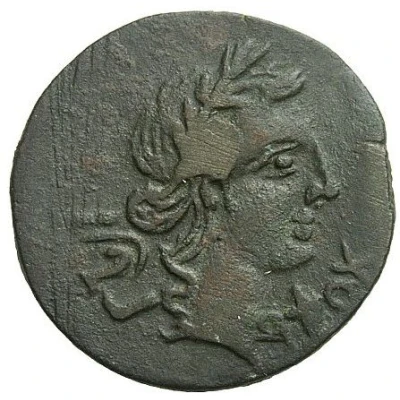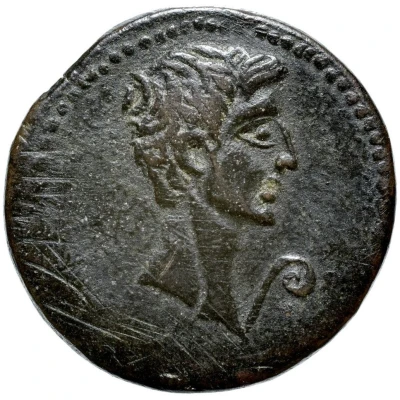
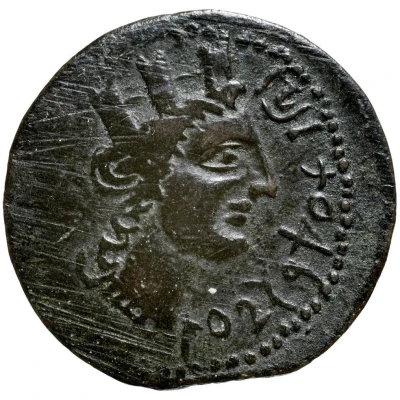

© Bibliothèque nationale de France / Gallica
Æ28–29 - Augustus Tyche; wyᶜt mᶜqr pyln 2 BC - 4 AD
| Bronze | 14.58 g | 28.5 mm |
| Issuer | Oea (Africa Proconsularis) |
|---|---|
| Emperor | Augustus (Caius Octavius) (27 BC - 14 AD) |
| Type | Standard circulation coin |
| Years | 2 BC - 4 AD |
| Composition | Bronze |
| Weight | 14.58 g |
| Diameter | 28.5 mm |
| Shape | Round (irregular) |
| Technique | Hammered |
| Orientation | 9 o'clock ↑← |
| Demonetized | Yes |
| Updated | 2024-10-10 |
| Numista | N#374141 |
|---|---|
| Rarity index | 100% |
Reverse
Head of goddess Tyche facing right, wearing mural crown. Beaded border.
Script: Neo-Punic
Lettering:
𐤌𐤏𐤒𐤓
𐤐𐤉𐤋𐤍 𐤌𐤏𐤒𐤓 𐤅𐤉𐤏𐤕
Edge
Rounded
Comment
Weight: 14.58 g average of 15 specimens (RPC III# 828; MAA#26)Diameter: 28–29 mm (RPC III# 828; MAA#26)
Denomination: possibly a dupondius (RPC III page 206; MAA# 26)
Reverse inscription:
𐤌𐤏𐤒𐤓 (mᶜqr) left, in neo-Punic script written right to left, representing the name of one of the two suffetes (magistrates). Müller wrongly assumed it stands for the allied city of Macaera.
𐤅𐤉𐤏𐤕 𐤌𐤏𐤒𐤓 𐤐𐤉𐤋𐤍 (wyᶜt mᶜqr pyln) right, in neo-Punic script written right to left. 𐤅𐤉𐤏𐤕 (wyᶜt) represents the name of the city, Oea. 𐤐𐤉𐤋𐤍 (pyln) and 𐤌𐤏𐤒𐤓 (mᶜqr) represent the names of the two suffetes (magistrates). Müller wrongly assumed they stand for the allied cities of Macaera (𐤌𐤏𐤒𐤓 / mᶜqr) and Bilan (𐤐𐤉𐤋𐤍 / pyln).
Interesting fact
One interesting fact about this coin is that it features an image of Tyche, the goddess of fortune, on one side, and Augustus, the Roman emperor, on the other. This coin was minted during Augustus' reign, and it's interesting to note that the image of Tyche was used to symbolize the prosperity and good fortune that Augustus brought to the Roman Empire during his rule.
